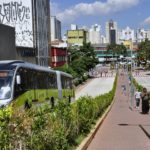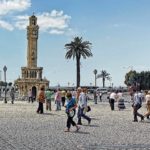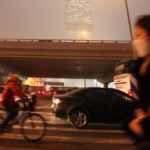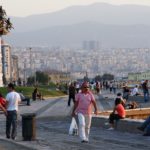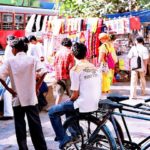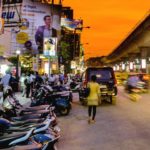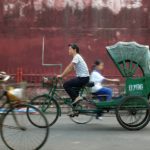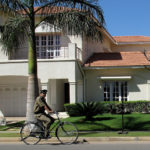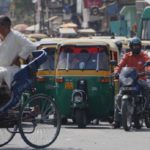Posts tagged with 'Asia'
Every day, more than 31 million people use bus rapid transit (BRT) systems and bus corridors in 189 cities. From Istanbul to Mexico City, BRT is saving people time, improving the environment, and making cities safer, more sustainable places to ...

Like many cities around the world, Indian cities are experiencing urbanization, motorization, and increasing congestion. Coupled with declining public transport use and infrastructure expenditures that promote a car culture by building roads and flyovers (overpasses), Indian cities are losing out ...

We are living in the midst of the urban century. Though it is common knowledge that the world is urbanizing, it can be striking to visualize this growth on a map. This animation from Unicef maps countries’ urban populations from ...

Linking Road is known as one of Mumbai’s busiest streets. On any given day, it is choked with cars, taxis, buses, and rickshaws from every possible direction. In addition, noise pollution emanating from motorized vehicles has made the environment increasingly ...

How can cities harness urban mobility solutions to become more livable? The second annual Livable Cities Symposium – co-hosted by EMBARQ Turkey and the İzmir Development Agency (İZKA) – addressed this question by gathering experts from Turkey and around the ...

For urban commuters, a safe, convenient place to store their bike can be the difference between choosing to cycle and needing to drive. Even in bicycle-friendly cities, cyclists can still face the challenge of having to lug their bike on ...

This is the first post of the China’s Clean Air Challenge series, exclusive to TheCityFix. This series examines the increasing social, environmental, and economic impacts of the serious air quality issue in Chinese cities, and investigates the source of emissions ...

Over the past half-century, the world has urbanized at an unprecedented pace. In 1970, about 37% of the world’s population lived in urban areas. This number rose to 45% in 1990, 54% in 2014, and is expected to reach 66% by 2050. Much of this urban ...

Cities worldwide face the pressing challenge of growing motorcycle fleets and remarkable increases in related traffic fatalities. With streets ill-prepared and motor-bikes whizzing in every direction, the scene might best be described as urban transport anarchy. The problem is especially ...

EMBARQ India spoke with Jyot Chadha, head of EMBARQ India’s Initiative to Catalyze Urban Innovations, about the launch of a new Data Visualization Challenge, which encourages citizens to use publicly released data to create data visualizations that shed light on ...

This summer, Indian Prime Minister Narendra Modi announced plans to build ‘100 smart cities’ across India in an effort to take advantage of the country’s recent urban boom and catalyze investment in Indian cities. His initiative will cost the government 1.15 ...

Every day, Mumbai residents are being squeezed out of spaces to walk or cycle by the sheer pressure of cars, whose numbers are growing rapidly each year. A recent report by the Munich-based global consultancy Roland Berger Strategy Consultants stated that ...

As cities worldwide innovate to improve mobility, Chinese cities lag behind in adopting emerging sustainable transport solutions. Still, a number of concepts are set to become crucial to the future of urban transport in China. Transit-oriented development (TOD), innovative transit ...

Rapid urbanization in countries such as India is raising people’s incomes, creating huge demand for housing, and increasing vehicle ownership rates in the upper-middle and middle classes. By 2030, 50% of India’s population is expected to live in cities, and ...

With the next few decades expected to witness to Asia’s swift rise in economic and political influence, the eyes of the world have focused on Asian cities as the engines of this growth. Last month’s Asian Development Bank Transport Forum ...

Page 3 of 21« First...234...1020...Last »






